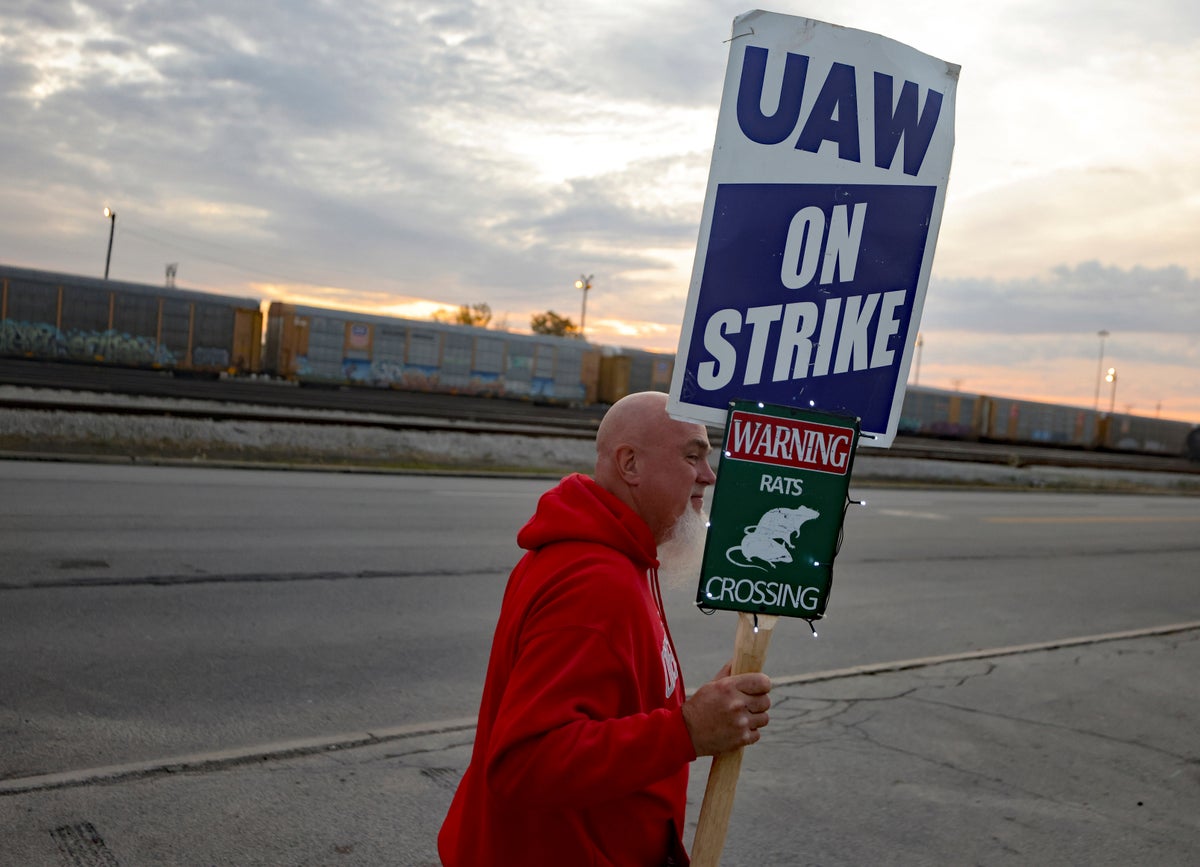
General Motors and Jeep maker Stellantis are meeting with United Auto Workers bargainers Thursday to see if they can reach a contract agreement that mirrors a deal signed with crosstown rival Ford.
Nearly 17,000 striking workers at Ford left the picket lines when the agreement was announced Wednesday night and will return to work shortly. About 57,000 Ford workers still have to vote on the tentative pact.
GM and Stellantis will have to follow the pattern set by Ford or it's likely that UAW President Shawn Fain will add factories to its partial strikes that began on Sept. 15, said Art Wheaton, director of labor studies at Cornell University.
“Fain does not strike me as someone who is going to be willing to concede anything to the other two automakers to break the pattern,” Wheaton said.
Additional strikes would be painful to the companies, especially at GM, which has profitable pickup truck plants in Fort Wayne, Indiana, and Flint, Michigan, that the union could shut down, Wheaton said.
GM and Stellantis are losing money due to the strikes and they may be eager to bring them to a close, even though it's not certain whether Ford workers will ratify the contract, Wheaton said. GM said Tuesday that it's losing about $200 million per week due to the strike, which this week hit the highly profitable factory in Arlington, Texas, that makes large truck-based SUVs such as the Chevrolet Tahoe.
The Ford deal, if approved by local union leaders and ratified by members, would give top-scale assembly plant workers a 25% raise over the life of the contract. Including cost of living raises, workers would get over 30% in pay increases to over $40 per hour by the time the contract expires on April 30 of 2028. They also won pay raises and a quicker path to full-time for temporary workers, the end of some wage tiers, pension increases, and increased 401(k) contributions for those without them. Members could begin voting next week on the pact.
GM is likely to be the next company to settle because it has agreed to pull new electric vehicle battery factories into the UAW's national contract, which essentially unionizes them. The UAW sees the plants as the jobs of the future in the auto industry as the nation and world transition from internal combustion engines to battery power. Workers making gasoline engines and transmissions will need a place to work when their plants are phased out.
It wasn't clear what Ford agreed to in terms of battery factories. The company has said it would be hard to unionize employees who haven’t been hired yet at plants that haven't been built. Ford had announced plans to build two battery factories in Kentucky, one in Tennessee and another in Michigan, but the Michigan plant is now on hold.
All three companies have said they don’t want to absorb labor costs that are so high that they would force price increases and make their vehicles more expensive than those made by nonunion companies such as Tesla and Toyota.
A study this month by Moody’s Investor Service found that annual labor costs could rise by $1.1 billion for Stellantis, $1.2 billion for GM and $1.4 billion for Ford in the final year of the contract. The study assumed a 20% increase in hourly labor costs.
Wheaton said the companies are making billions and now can afford the higher labor costs, which he estimated are 6% to 8% of the cost of a vehicle.







